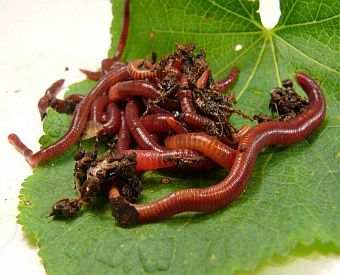The Basic Principles Of Red Wiggler Express
The Basic Principles Of Red Wiggler Express
Blog Article
Getting My Red Wiggler Express To Work
Table of ContentsThe Of Red Wiggler ExpressThe Main Principles Of Red Wiggler Express Indicators on Red Wiggler Express You Need To KnowUnknown Facts About Red Wiggler ExpressHow Red Wiggler Express can Save You Time, Stress, and Money.Red Wiggler Express for Beginners
Red wigglers and garden compost worms' favorite foods are most fruits - they especially enjoy bananas, strawberries, raspberries, blueberries, peaches, and melons! Yes - however we recommend feeding potato peels to worms in small amounts (Red Wigglers For Sale). Potato peels are starchy and do not break down conveniently so they can take a while for the red wigglers to failure and take inWe feed our worms at Brothers Worm Farm twice a week, and the majority of us do the very same with our worm containers at home. Red wigglers tend to eat even more when temperature levels are modest (60-80 degrees), so you may find a requirement to feed them more during these periods. If you are leaving for trip or a trip and are fretted about your worms, there are a few points you can do to ensure their survival.
Bedding can be the original kind of bed linens you used or several handfuls of shredded cardboard. Provide the surface of the bed linen a hefty misting so the bed linens doesn't completely dry out.
The Best Guide To Red Wiggler Express
Location an item of cardboard over the surface of the container (this will certainly aid it preserve dampness). If you are leaving for greater than 2 weeks, we suggest having a friend or relative feed and water the worms every 1.5 weeks while you are gone. You can leave food for the worms in the fridge and a tiny spray bottle for watering.
Thanks for reading and happy farming!.
Red worms are nature's supreme composting worm and a great pick for worm ranches. They're typically called red wigglers, tiger worms, manure worms, composting worms, and the trout worms.
Some Of Red Wiggler Express


Red worms have many properties which make them suitable for the garden compost container. Of all the worms ideal for worm farming the red worm is the most adaptable and passionate.
Rotting fallen leaves, yards, timber, and pet manure are all favorites of red worms. The red worm's ravenous appetite makes it the champion of the garden compost container and a digital worm casting (a.k.a. worm poop) devices.
A 24" x 24" worm bin can quickly house over 1000 red worms. For those interested in increasing lure worms it's excellent to keep in mind that congested red worms will certainly remain relatively slim and short.
What Does Red Wiggler Express Do?
An additional advantage of red worms is their ability with stand a broad range of temperature level extremes. When the temperature level dips red worms need to be safeguarded from freezing weather.
That can be as easy as keeping them in trench filled with aged manure and covered with straw or leaves. Similarly; when temperature levels increase maintain your worm farm cool. If your bedding gets over 85 levels red worms will certainly attempt to escape your bins for cooler locations. Offer them with color or if possible action them right into your basement.
Like all worms red worms take a breath oxygen through their skin. A moist setting additionally facilitates the break down of natural matter in their bed linen product by microbial life forms.
A worm farm complete of red wigglers is an outstanding means to compost food scraps, left overs, garden waste, and leaves. Feeding redworms is pretty very easy, yet there are some basic yet vital points to bear in mind in order to maintain you worm farm healthy. In this area we will cover what you must and ought to not be feeding your worms.
Red Wiggler Express Things To Know Before You Get This

Prior to going down off all the needed reproductive products are scooped up right into the ring. When the mucus ring goes down off the worm the end seals up, creating it to taper at one end, causing the acquainted lemon shape of the cocoon. Over the next 20 days the cocoon darkens and hardens.
If you do not feed them they will go seeking food. Like all worms red worms take a breath oxygen via their skin. In order to breathe they need a wet, however not saturated bed linens material. A wet environment also helps with the malfunction of raw material in their bed linens material by microbial life kinds.
A worm ranch complete of red wigglers is an outstanding method to compost food scraps, left overs, yard waste, and leaves. Feeding redworms is pretty simple, yet there are some standard but crucial things to keep in mind in order to keep you worm ranch healthy and balanced. In this area we will certainly cover what you should and should not be feeding your worms.
Red Wiggler Express Fundamentals Explained
During mating worms slide along each other until their clitellum are straightened. They hold on to every other with bristle like hairs, called setae, located on their underside. While embraced they trade reproductive seminal liquids which is stored for later usage. During the breeding session, which lasts for regarding 3 hours, the worms produce mucus rings around themselves.

Report this page